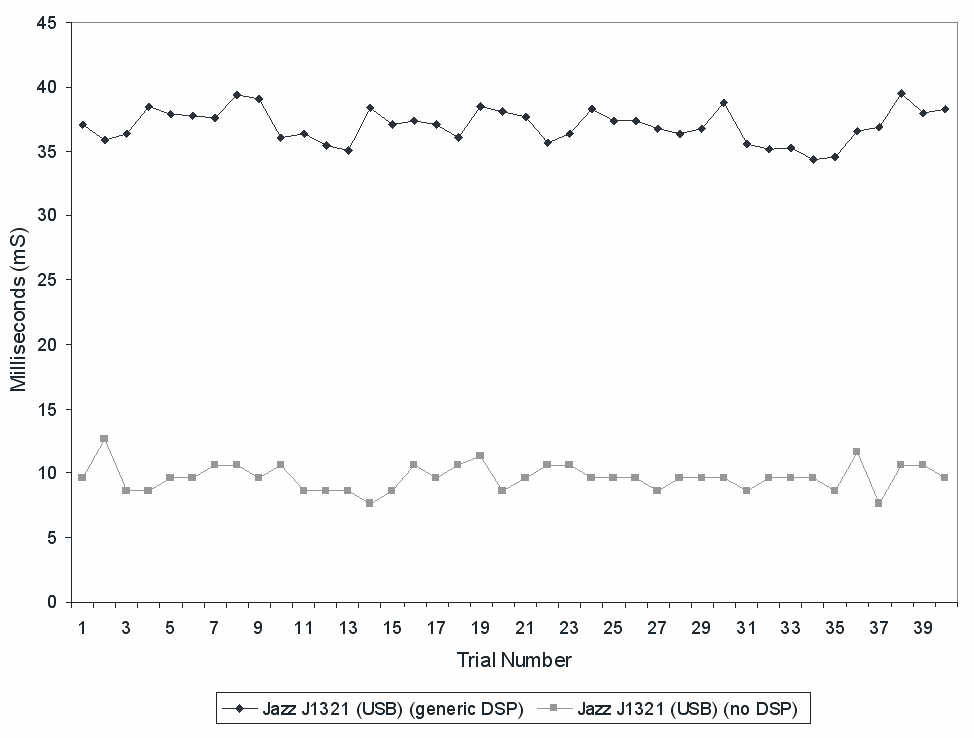Background
At the Black Box ToolKit we specialize in helping you achieve millisecond accurate presentation, synchronization, and response timing in your computer-based psychology experiments. Here are just a few of the things that can stop you doing just that!- TFT Input lag
- TFT response time
- Image intensity
- Sound card latency
- Response devices
- Voice keys
- 3rd party equipment
- OS issues
- Software settings
- Conditional biases
- The laws of physics




Need more help?
If you are unsure of how our products could work for you take a look at our What, Why and How pages. Answers to common application questions can be found in the FAQ section.If you have an application in mind but aren't sure, feel free to get in touch via email. Alternatively contact us by mail, phone or fax. We are here to help!
Software settings, bugs and device drivers in psychology experiments
 Modern software used to run
psychology experiments has more functionality than ever enabling
you to construct a wide range of paradigms that were previously
beyond reach. However this complexity comes at a price. Often
there are a multitude of settings that you can alter. Each of
which can have a subtly different effect on millisecond timing
accuracy. It's questionable how many researchers actually use the
same settings for each study or fully understand the ramifications
of their choices. Some experiment generators may use a multitude
of techniques and settings to try and achieve better presentation
timings for example.
Modern software used to run
psychology experiments has more functionality than ever enabling
you to construct a wide range of paradigms that were previously
beyond reach. However this complexity comes at a price. Often
there are a multitude of settings that you can alter. Each of
which can have a subtly different effect on millisecond timing
accuracy. It's questionable how many researchers actually use the
same settings for each study or fully understand the ramifications
of their choices. Some experiment generators may use a multitude
of techniques and settings to try and achieve better presentation
timings for example.Modern software whether it be the software you use to write papers with, your experiment generator or even the operating system, will have bugs in it. Simply if certain conditions are met it won't function as intended when running your computer-based psychology experiment. This can lead to unintentional millisecond timing errors which you may never know about unless you check empirically with a Black Box Toolkit v3. There is the well known case of fMRI software miscalculating gradients and bringing years of research across the globe into question. There is also the wider question of whether many fMRI studies can be replicated at all due to the variety of analysis software and techniques used within the field.
Even the "best" software has bugs in it which can have literally devastating consequences. For example, remember the Northeast Power Blackout in the USA (programming bug), NASA Mars Climate Orbiter (metric to imperial measurement "miscommunication"), or something as mundane as the Denver Airport baggage-handling system! These three sets of software bugs alone cost well over 10 billion US Dollars.
Hardware device drivers provided by manufacturers can also be a source of timing error. Whilst drivers should be simple often manufacturers add as many bells and whistles as they can fit in. Settings and bugs in hardware drivers can have a dramatic impact. For example, DSP or effects settings, on soundcards can add 10's of milliseconds to latency.

Sound output delay with two
different DSP settings on the same soundcard.
Most people assume that even a "generic" effect will by fine so will leave the
settings at their default unaware of the consequences (from Plant & Turner 2009).
Most people assume that even a "generic" effect will by fine so will leave the
settings at their default unaware of the consequences (from Plant & Turner 2009).
References
Richard R. Plant and Garry Turner, "Millisecond precision psychological research in a world of commodity computers: New hardware, new problems?", Behavior Research Methods, 2009, Volume 41, Number 3, Pages 598-614
